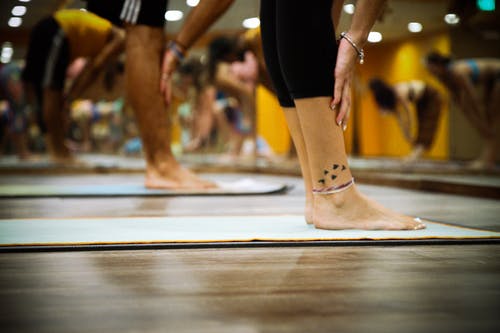By WIN Contributor: Jeff Dill, Physiotherapist
Does this sound familiar: the alarm clock goes off, you roll out of bed, take that first step and, YIKES!!!
You get a sharp pain on the bottom of your foot!
Although the discomfort lessens over the coming minutes, you still experience this uncomfortable pain with each step. If this, or something similar, is happening to you, you may have plantar fasciitis.
What is the “Plantar Fascia”?
The plantar fascia is a thickened band connective tissue that runs from the inside part of the heel bone to the base of the toes. Functionally, the plantar fascia acts to maintain the medial (inside) arch of the foot when we put weight down through our foot during activities such as walking, running, climbing stairs, etc. (1)
Testing for, Signs & Symptoms of, Plantar Fasciitis
To test if someone has plantar fascia condition the “Windlass Test” may be used. (2) During this test, an individual stands while the practitioner bends the big toe upwards (note, this test may also be done in supine). Pain will be experienced along the plantar fascia or inside part of the heel if the condition is present.
Plantar fasciitis is typically worse in the morning, upon standing after prolonged sitting, and may actually ease during light activity, only to return afterwards.
Why Causes Plantar Fasciitis?
Plantar fasciitis occurs when excessive/repeated tension is placed on the fascia. This increased tension can result from prolonged time in pronation (aka. when the foot rolls inwards). (3) The following factors can contribute to plantar fasciitis:
a) High or low arches: When we walk, high arches are more rigid and don’t absorb as much of the bodyweight force placed on the foot leading to more stress placed on the heel and plantar fascia. Conversely, low arches place more tension on the plantar fascia in order to try to maintain the arch in our foot.
b) Weakness of Tibialis Posterior: this muscle, which sits below our calf muscles, is one of the primary stabilizers of the medial longitudinal arch of our foot during stance. If this muscle is weak we will remain in pronation for a prolonged period of time leading to increased stress on the plantar fascia.
c) Weakness of hip & thigh musculature: weak hip and thigh muscles mean less force is absorbed here and is thus transmitted down to the foot leading to increased stress on foot musculature and plantar fascia.
Treating Plantar Fasciitis
Different options to assist in relieving pain associated with plantar fasciitis include: (3)
a) Strengthening intrinsic foot muscles, tibialis posterior, and hip/thigh muscles
b) Stretching the plantar fascia and calf muscles
c) Soft tissue release of plantar fascia and calf
d) Rolling a golf ball or frozen water bottle under one’s foot
e) Taping to support the arch in the foot
f) Using a silicone gel pad under one’s heel
g) Using NSAIDs (short-term pain relief)
h) Night splints (including Strasbourg socks)
If you feel as though you may be suffering from plantar fasciitis, talk with one of our WIN Physiotherapists at WIN Health Solutions and we’d be happy to help put you on your road to recovery. We would assess your biomechanics, advise on a strengthening & stretching routine, as well as use soft tissue techniques to help relieve tension on the fascia and associated structures. There are many options to help resolve plantar fasciitis and we’ll work with you to find the best individualized approach for you.
1) Bolgla L, Malone T. Plantar Fasciitis and the Windlass Mechanism: A biomechanical Link to Clinical Practice. Journal of Athletic Training. 2004; 39(1): 77-82
2) Brown C. A review of subcalcaneal heel pain and plantar fasciitis. Aust Fam Physician. 1996; 25:875-885
3) Khan, Karim, & Brukner, Peter. Clinical Sports Medicine. 4th ed., McGraw-Hill Medical, 2012.


